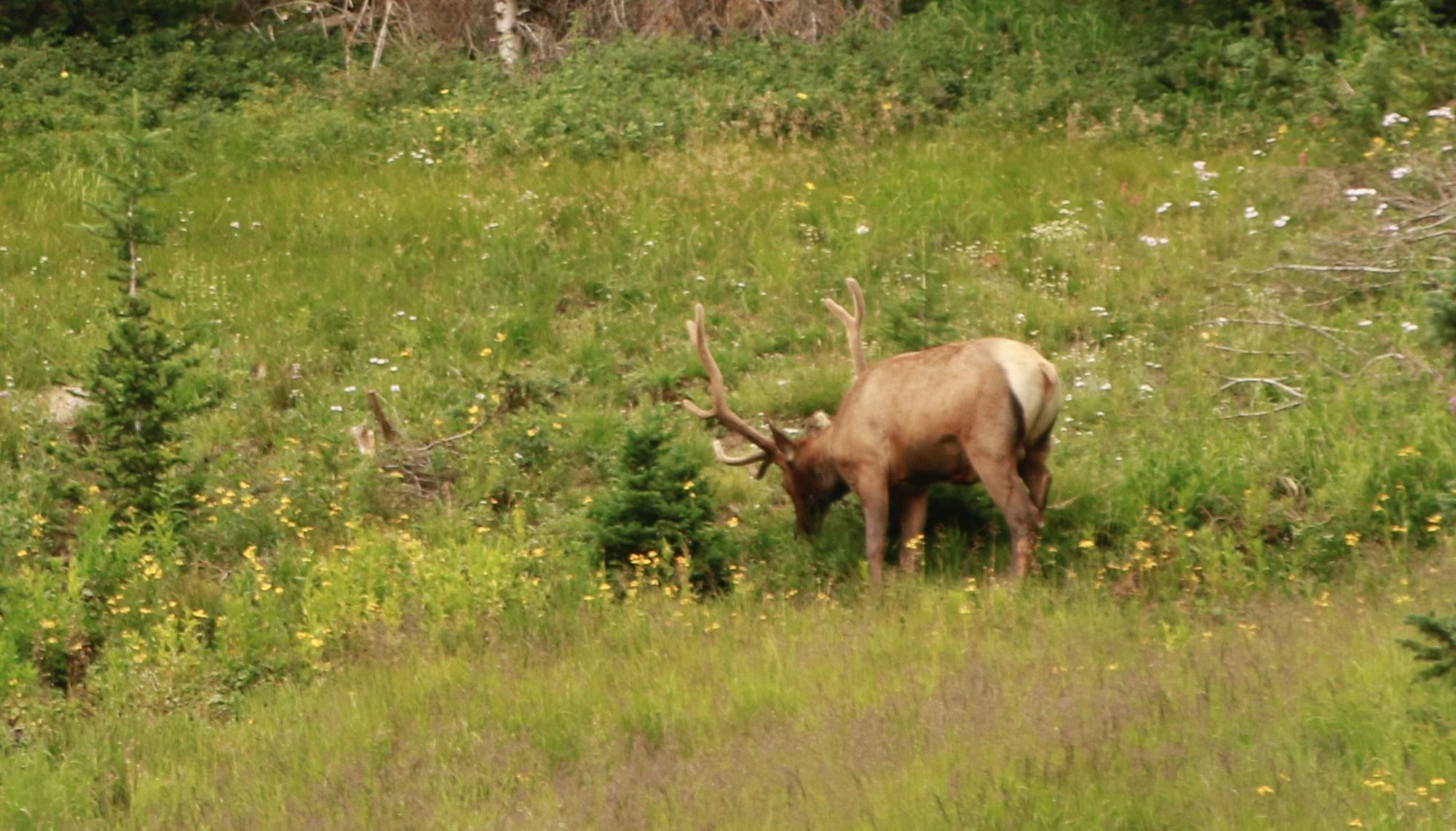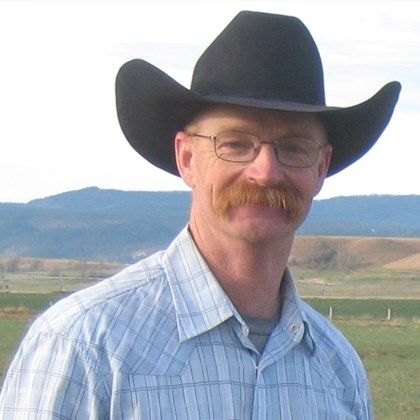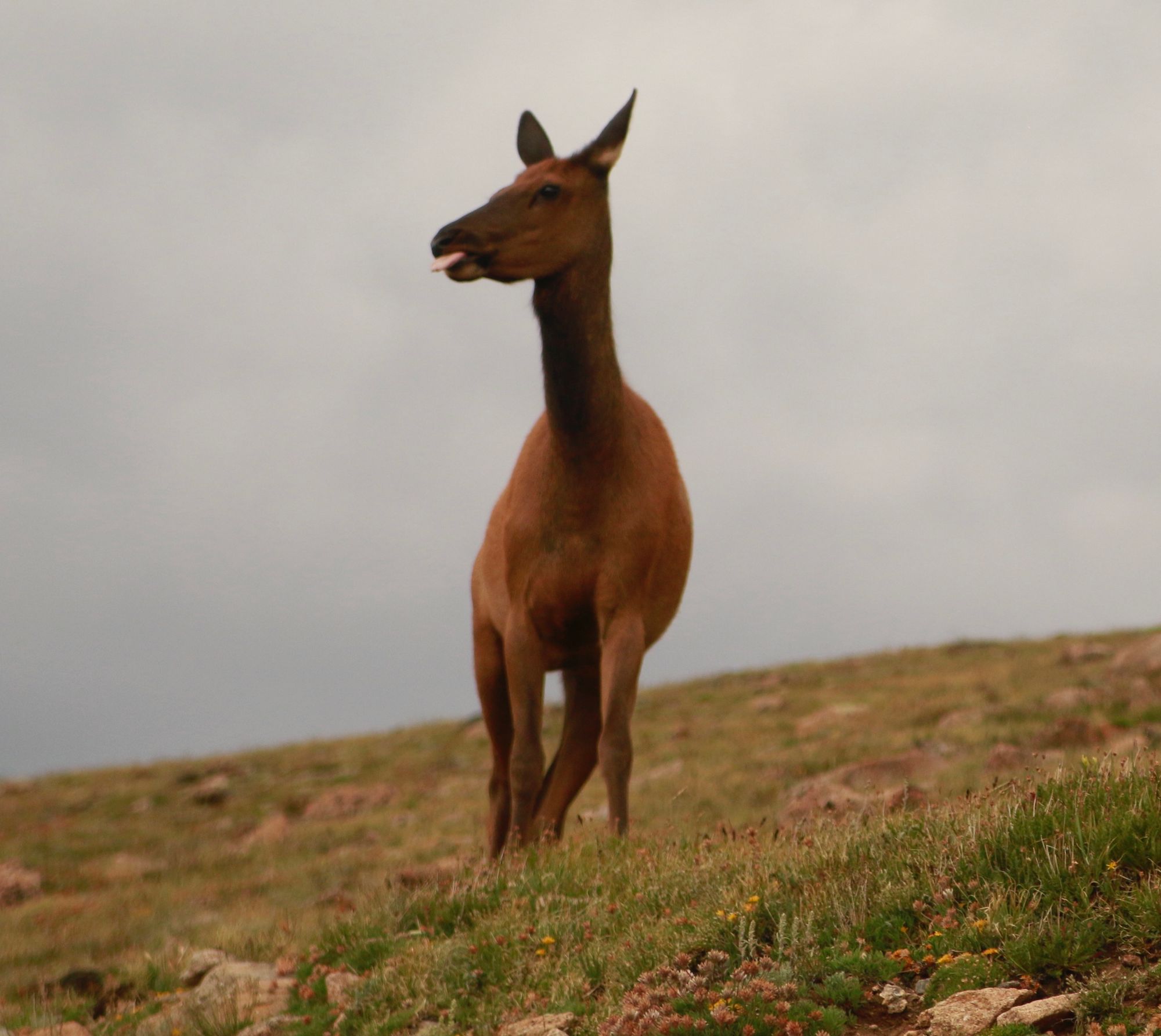North American elk are returning to the prairies of western South Dakota after more than 100 years of absence, a migration seen as a win for wildlife conservation but which has farmers and ranchers bothered by feed losses and property damage.
The herding of Rocky Mountain elk as far east as Jones and Stanley counties has led to calls for a new hunting season on the prairie to reduce elk numbers and the damage they are causing.
Landowners on the prairies north of Philip and west of Pierre say elk — one of the largest herbivores native to North America — are increasingly grazing in their fields and pastures and are damaging fences and eating food meant for their livestock. Previously, elk mainly resided only in the Black Hills region 175 miles or more to the west.
Spending by the Game, Fish & Parks Department Wildlife Damage Program on elk-related complaints jumped by nearly $100,000 in 2019. Wildlife damage specialists also covered 7,000 more miles to assist landowners with elk damage in 2019 than in 2018.
Partially in response to landowner complaints and in the wake of more elk sightings, GFP officials have proposed that the game and parks commission approve creation of a massive new elk hunting unit.
“We know there’s elk in there, and we’re actually talking about opening that up for hunting at some point,” GFP Secretary Kelly Hepler told News Watch in an interview.
Under the proposal, a total of 10 “any elk” hunting licenses would be made available for use in the new hunting unit. The unit would cover all of South Dakota west of the Missouri River that doesn’t already have an elk hunting season or isn’t managed by one of the state’s tribal nations.
Tom Kirschenmann, wildlife division chief for GFP, said the new unit would be something of an experiment.
The experiment is needed because the department doesn’t actually know much about elk populations outside the Black Hills. In that region, elk are counted every three to four years using aircraft flying low and slow over the mountains. The effort produces a reliable population estimate, biologists say. Current estimates put the number of elk in the Black Hills at around 7,200 animals, well within the population range sought by the GFP.

North American elk are returning to the prairies of western South Dakota after more than 100 years of absence, a migration seen as a win for wildlife conservation but which has farmers and ranchers bothered by feed losses and property damage.
The herding of Rocky Mountain elk as far east as Jones and Stanley counties has led to calls for a new hunting season on the prairie to reduce elk numbers and the damage they are causing.
Landowners on the prairies north of Philip and west of Pierre say elk — one of the largest herbivores native to North America — are increasingly grazing in their fields and pastures and are damaging fences and eating food meant for their livestock. Previously, elk mainly resided only in the Black Hills region 175 miles or more to the west.
Spending by the Game, Fish & Parks Department Wildlife Damage Program on elk-related complaints jumped by nearly $100,000 in 2019. Wildlife damage specialists also covered 7,000 more miles to assist landowners with elk damage in 2019 than in 2018.
Partially in response to landowner complaints and in the wake of more elk sightings, GFP officials have proposed that the game and parks commission approve creation of a massive new elk hunting unit.
“We know there’s elk in there, and we’re actually talking about opening that up for hunting at some point,” GFP Secretary Kelly Hepler told News Watch in an interview.
Under the proposal, a total of 10 “any elk” hunting licenses would be made available for use in the new hunting unit. The unit would cover all of South Dakota west of the Missouri River that doesn’t already have an elk hunting season or isn’t managed by one of the state’s tribal nations.
Tom Kirschenmann, wildlife division chief for GFP, said the new unit would be something of an experiment.
The experiment is needed because the department doesn’t actually know much about elk populations outside the Black Hills. In that region, elk are counted every three to four years using aircraft flying low and slow over the mountains. The effort produces a reliable population estimate, biologists say. Current estimates put the number of elk in the Black Hills at around 7,200 animals, well within the population range sought by the GFP.

North American elk are returning to the prairies of western South Dakota after more than 100 years of absence, a migration seen as a win for wildlife conservation but which has farmers and ranchers bothered by feed losses and property damage.
The herding of Rocky Mountain elk as far east as Jones and Stanley counties has led to calls for a new hunting season on the prairie to reduce elk numbers and the damage they are causing.
Landowners on the prairies north of Philip and west of Pierre say elk — one of the largest herbivores native to North America — are increasingly grazing in their fields and pastures and are damaging fences and eating food meant for their livestock. Previously, elk mainly resided only in the Black Hills region 175 miles or more to the west.
Spending by the Game, Fish & Parks Department Wildlife Damage Program on elk-related complaints jumped by nearly $100,000 in 2019. Wildlife damage specialists also covered 7,000 more miles to assist landowners with elk damage in 2019 than in 2018.
Partially in response to landowner complaints and in the wake of more elk sightings, GFP officials have proposed that the game and parks commission approve creation of a massive new elk hunting unit.
“We know there’s elk in there, and we’re actually talking about opening that up for hunting at some point,” GFP Secretary Kelly Hepler told News Watch in an interview.
Under the proposal, a total of 10 “any elk” hunting licenses would be made available for use in the new hunting unit. The unit would cover all of South Dakota west of the Missouri River that doesn’t already have an elk hunting season or isn’t managed by one of the state’s tribal nations.
Tom Kirschenmann, wildlife division chief for GFP, said the new unit would be something of an experiment.
The experiment is needed because the department doesn’t actually know much about elk populations outside the Black Hills. In that region, elk are counted every three to four years using aircraft flying low and slow over the mountains. The effort produces a reliable population estimate, biologists say. Current estimates put the number of elk in the Black Hills at around 7,200 animals, well within the population range sought by the GFP.

North American elk are returning to the prairies of western South Dakota after more than 100 years of absence, a migration seen as a win for wildlife conservation but which has farmers and ranchers bothered by feed losses and property damage.
The herding of Rocky Mountain elk as far east as Jones and Stanley counties has led to calls for a new hunting season on the prairie to reduce elk numbers and the damage they are causing.
Landowners on the prairies north of Philip and west of Pierre say elk — one of the largest herbivores native to North America — are increasingly grazing in their fields and pastures and are damaging fences and eating food meant for their livestock. Previously, elk mainly resided only in the Black Hills region 175 miles or more to the west.
Spending by the Game, Fish & Parks Department Wildlife Damage Program on elk-related complaints jumped by nearly $100,000 in 2019. Wildlife damage specialists also covered 7,000 more miles to assist landowners with elk damage in 2019 than in 2018.
Partially in response to landowner complaints and in the wake of more elk sightings, GFP officials have proposed that the game and parks commission approve creation of a massive new elk hunting unit.
“We know there’s elk in there, and we’re actually talking about opening that up for hunting at some point,” GFP Secretary Kelly Hepler told News Watch in an interview.
Under the proposal, a total of 10 “any elk” hunting licenses would be made available for use in the new hunting unit. The unit would cover all of South Dakota west of the Missouri River that doesn’t already have an elk hunting season or isn’t managed by one of the state’s tribal nations.
Tom Kirschenmann, wildlife division chief for GFP, said the new unit would be something of an experiment.
The experiment is needed because the department doesn’t actually know much about elk populations outside the Black Hills. In that region, elk are counted every three to four years using aircraft flying low and slow over the mountains. The effort produces a reliable population estimate, biologists say. Current estimates put the number of elk in the Black Hills at around 7,200 animals, well within the population range sought by the GFP.



